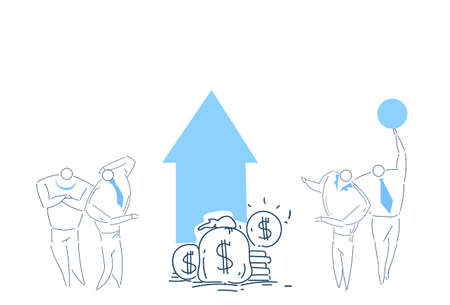1. Understanding Debt Snowball and Debt Avalanche Methods
If you’re looking for ways to pay off debt, you’ve probably come across two popular methods in American personal finance: the Debt Snowball and the Debt Avalanche. Let’s break down what these strategies are, how they work, and how they became part of everyday money talk in the U.S.
What is the Debt Snowball Method?
The Debt Snowball approach means you start by paying off your smallest debts first, no matter what their interest rates are. You make minimum payments on all your debts except for the one with the lowest balance. You put any extra money toward that smallest debt. Once it’s gone, you take the payment you were using for that debt and add it to the payment for your next smallest debt. This way, your “snowball” of payments gets bigger as you knock out each balance.
How Does Debt Snowball Work?
| Step | Description |
|---|---|
| List Debts Smallest to Largest | Ignore interest rates; focus on balance size. |
| Pay Minimums on All But Smallest | Keep every account current while focusing on one. |
| Attack the Smallest Balance | Put as much extra cash as possible toward this debt. |
| Repeat as Each Debt is Paid Off | Move on to the next smallest balance with a bigger payment. |
What is the Debt Avalanche Method?
The Debt Avalanche strategy takes a more mathematical approach. Here, you list all your debts by interest rate, from highest to lowest. You pay minimums on everything except for the debt with the highest interest rate. Any extra cash goes toward that high-interest debt first. Once it’s paid off, your extra money goes to the next highest rate, and so on. Over time, this method saves you more money in interest costs.
How Does Debt Avalanche Work?
| Step | Description |
|---|---|
| List Debts Highest to Lowest Interest Rate | This puts expensive debts at the top of your list. |
| Pay Minimums on All But Highest Rate | Stay up-to-date on every loan or card. |
| Tackle High-Interest Debt First | Put all extra funds here to reduce overall interest paid. |
| Continue Down Your List | Work through each debt until all are paid off. |
The Roots of These Strategies in American Financial Culture
The Debt Snowball method was made famous by financial guru Dave Ramsey, who emphasizes motivation and quick wins to keep people moving forward. It’s become a go-to option for folks who need encouragement and want to see progress fast—even if it isn’t mathematically optimal. The Debt Avalanche, on the other hand, is favored by finance experts and math-minded people because it minimizes total interest paid over time. Both methods have found a place in U.S. culture thanks to a growing emphasis on personal finance education and self-help approaches that make dealing with debt feel manageable rather than overwhelming.
2. Breaking Down the Math
How Debt Snowball and Debt Avalanche Work in Numbers
When it comes to paying off debt, understanding the math behind each method can help you decide which one is best for your situation. Let’s look at how the Debt Snowball and Debt Avalanche methods work, using real-world U.S. debt examples to compare interest savings and repayment timelines.
Debt Snowball: Tackling Small Balances First
The Debt Snowball method focuses on paying off your smallest balances first, regardless of interest rate. You make minimum payments on all debts except the smallest, which gets any extra cash. Once that’s paid off, you roll what you were paying onto the next smallest debt, building momentum like a snowball rolling downhill.
Example Scenario
| Debt Type | Balance | Interest Rate | Minimum Payment |
|---|---|---|---|
| Credit Card A | $1,200 | 18% | $50 |
| Credit Card B | $3,000 | 22% | $90 |
| Auto Loan | $7,500 | 6% | $230 |
| Student Loan | $15,000 | 5% | $150 |
If you have $300 per month to put toward debt:
- Step 1: Pay minimums on everything but Credit Card A.
- Step 2: Put all extra funds toward Credit Card A until it’s gone.
- Step 3: Move to Credit Card B, then Auto Loan, then Student Loan.
Debt Avalanche: Attacking High Interest First
The Debt Avalanche method targets the highest interest rate debts first, which usually saves more money over time. Here, you pay minimums on everything but the debt with the highest interest rate.
Example Scenario Using the Same Debts:
- Step 1: Focus all extra payments on Credit Card B (22%).
- Step 2: After Credit Card B is paid off, move to Credit Card A (18%), then Auto Loan (6%), and finally Student Loan (5%).
Comparing Interest Savings & Repayment Timelines: The Numbers Side-by-Side
| Total Interest Paid* | Total Time to Pay Off* | |
|---|---|---|
| Debt Snowball Method | $3,100 (approx.) | 50 months (approx.) |
| Debt Avalanche Method | $2,600 (approx.) | 47 months (approx.) |
*These numbers are estimates based on typical U.S. repayment patterns and may vary based on actual payment amounts and changing interest rates.
The Takeaway from the Math Breakdown
The Debt Avalanche method generally leads to lower total interest paid and a faster payoff timeline if you stick with it. However, many people find the quick wins of the Debt Snowball method more motivating—and that motivation can be key to sticking with your plan.
![]()
3. The Psychology Behind Each Approach
When it comes to paying off debt, the numbers are only part of the story. The way we feel about debt, our motivation, and how we react to progress all play a huge role in whether we stick with our plan. Let’s explore the psychological factors behind both the Debt Snowball and Debt Avalanche methods, and why different approaches work for different people—especially in the context of American consumer habits.
Understanding Motivation: Quick Wins vs. Maximum Efficiency
The Debt Snowball method taps into our desire for quick wins. By paying off the smallest balances first, you get to see results fast. This creates a sense of accomplishment that keeps you going. On the other hand, the Debt Avalanche focuses on saving more money in the long run by targeting high-interest debts first. While this is mathematically optimal, it can sometimes feel like slow progress if your highest-interest debt also has a big balance.
| Approach | Main Motivation | Common Emotional Response |
|---|---|---|
| Debt Snowball | Quick victories & visible progress | Boosts confidence and momentum early on |
| Debt Avalanche | Logical savings & long-term benefits | Requires patience; may feel discouraging at first |
Behavioral Finance Insights: Why Americans Choose One Over the Other
Behavioral finance shows that most people are more motivated by immediate rewards than by future gains—a concept known as “present bias.” This explains why many Americans prefer the Debt Snowball: small wins help them believe they can actually become debt-free. In fact, studies have found that sticking to any plan is often more important than choosing the most efficient plan.
Common Patterns Among U.S. Consumers:
- Preference for Simplicity: Many Americans like clear steps and simple progress markers, which the Snowball method provides.
- Emotional Relief: Paying off even one credit card feels like lifting a weight off your shoulders, reducing financial stress.
- Avoidance of Overwhelm: Large balances (often targeted first by Avalanche) can seem impossible to tackle, causing some to give up before making real progress.
- Pride in Progress: Sharing milestones with friends or family (like “I paid off my first loan!”) is common in American culture and reinforces positive behavior.
Which Method Fits Your Personality?
If you need encouragement and love checking items off a list, Snowball might keep you motivated. If you’re driven by logic and want to minimize interest payments no matter what, Avalanche could be your style. Either way, understanding your own psychological triggers can help you choose—and stick with—the approach that fits your life best.
4. Pros and Cons for U.S. Consumers
Understanding the Real-World Impact
When it comes to paying off debt, American consumers often choose between the Debt Snowball and Debt Avalanche methods. Both strategies can help you get out of debt, but each one has unique benefits and drawbacks that affect your day-to-day life, credit score, and budgeting style.
Debt Snowball: Pros and Cons
| Pros | Cons |
|---|---|
| Easier to stay motivated because you see quick wins by paying off small balances first. | You might pay more in interest over time since you ignore interest rates at first. |
| Simplifies your monthly budget as you eliminate accounts faster. | Might take longer overall if your largest debts have high interest rates. |
| Can boost your credit score sooner by reducing the number of open accounts with balances. | Not always the most cost-effective in terms of total money spent on debt repayment. |
Debt Avalanche: Pros and Cons
| Pros | Cons |
|---|---|
| Saves more money on interest by targeting high-rate debts first. | May feel less motivating because early progress is slower, especially if your highest-interest debt has a big balance. |
| Helps you become debt-free faster if you stick with it consistently. | Might be harder to maintain momentum since smaller debts linger longer. |
| Good for people who are disciplined and want to maximize savings. | Your credit score may not improve as quickly if smaller accounts remain open longer. |
How Each Method Impacts Credit Scores
Both methods can improve your credit score over time, but they do so in different ways. The Debt Snowball method often results in a faster improvement because it closes out more accounts quickly, which reduces your credit utilization ratio. The Debt Avalanche method may take a bit longer to show results on your credit report, but in the long run, both can help boost your score if you make payments on time and keep old accounts open after paying them off.
The Effect on Everyday Budgeting for Americans
If you need extra motivation and enjoy checking items off a list, the Debt Snowball can make budgeting feel more manageable since you see progress fast. If youre focused on saving every possible dollar, the Debt Avalanche might be better for your financial plan because youll pay less in interest over time. For many Americans, choosing the right strategy depends on whether staying motivated or saving money is more important to their personal situation and spending habits.
5. How to Choose the Best Strategy for You
When it comes to picking between the debt snowball and debt avalanche methods, there’s no universal “best” choice. The right strategy depends on your unique financial situation, goals, and even your personality. Let’s break down how you can decide which approach fits you best—and when it might make sense to switch things up.
Assess Your Financial Situation
Start by listing all your debts, including the balance, interest rate, and minimum payment for each one. This gives you a clear snapshot of what you’re dealing with and helps you compare both strategies side by side.
| Debt Name | Balance | Interest Rate | Minimum Payment |
|---|---|---|---|
| Credit Card A | $3,000 | 22% | $60 |
| Credit Card B | $1,200 | 18% | $30 |
| Car Loan | $8,000 | 6% | $200 |
| Student Loan | $15,000 | 5% | $150 |
Consider Your Mindset and Motivation
The debt snowball method focuses on quick wins—paying off the smallest debts first. If you feel overwhelmed or need frequent motivation boosts, this method can give you that sense of accomplishment early on, making it easier to stick with your plan.
If you’re more numbers-driven and motivated by saving money in the long run, the debt avalanche might be your style. It targets high-interest debts first, so you pay less overall in interest—even if it takes longer to see a debt disappear completely.
Align With Your Financial Goals
Your goals matter! If your top priority is becoming debt-free as quickly as possible regardless of cost, weigh out which method pays off your debts faster based on your specific balances and rates. If maximizing savings is most important, lean toward the avalanche.
If you want to improve your credit score quickly (for example, before applying for a mortgage), knocking out small revolving debts can help lower your credit utilization ratio—a key factor in credit scoring.
Quick Comparison Table:
| Debt Snowball | Debt Avalanche | |
|---|---|---|
| Main Benefit | Quick wins/motivation boost | Saves more money on interest |
| Best For… | If motivation is a challenge or you need momentum early on. | If you’re disciplined and focused on long-term savings. |
| Pays Off Debts In… | Order of smallest balance to largest balance. | Order of highest interest rate to lowest interest rate. |
Be Flexible: When to Switch Strategies?
Your life isn’t static—and neither should be your debt payoff plan. If you start with one method but find yourself losing steam (or getting frustrated with slow progress), it’s totally okay to pivot.
You might begin with the snowball for some fast wins and then transition to the avalanche once those small balances are gone. Or vice versa—start with the avalanche but switch if motivation lags.
The most important thing is steady progress: paying off debt consistently and not giving up when things get tough.
Troubleshooting Tips:
- If you miss payments or feel stuck, reassess your budget—can you free up more cash?
- If a major life event happens (job loss, medical emergency), pause aggressive payments and focus on essentials until things stabilize.
No matter which path you choose, remember: both methods work if you stick with them. The best strategy is one that matches your habits, keeps you moving forward, and ultimately helps you become debt-free.


